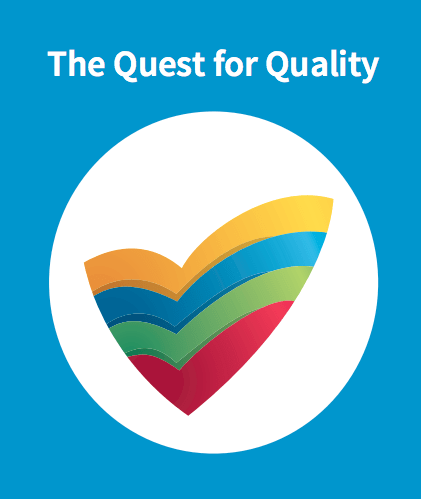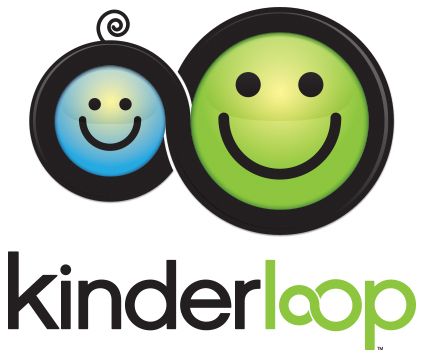Hey Educators, if you haven’t already heard, ACECQA are making some changes to the assessment and rating process in 2023 (you can read more about the changes by clicking here). With a renewed focus on the Quality Improvement Plan (QIP) we wanted to give you some top tips to getting your QIP ready for action.
What is a QIP?
A QIP is a document used to support Early Childhood Education and Care (ECEC) providers to self-assesses performance and plan for future improvements within their service. The QIP is a ‘living document’ and must be updated at least once a year, it is also a requirement that the QIP is readily available to the regulatory authority or to families of a child enrolled or looking to enrol.
Why is a QIP important?
Aside from the legislative requirements of having an up-to-date QIP… A meaningful QIP is a true reflection of your service, it highlights your service’s strengths, culture, passion and drive. Regular updates to the QIP demonstrate a culture of continuous improvement at your service. Your QIP can illustrate how you and your services’ stakeholders strive for the best possible outcomes for children within your care and the steps taken to continually improve your service.
Who’s role is it to write the QIP?
This one is ALWAYS a big question. It is essential to have all stakeholders involved in developing, implementing and reviewing the QIP. A stakeholder is anyone who is involved with your service, it can be an owner(s), the service team, children, families and the local community. Engaging multiple stakeholders ensures everyone’s voice has been heard.
What can Kinderloop do to help me develop my QIP?
Kinderloop’s QIP feature can be turned on/off in your options area. The QIP feature intuitively automates the evidence you need, allows educators to take a ‘snapshot; providing evidence of continuous progress and neatly closes off completed areas to keep you focused and on track. Your QIP can also be shared with current families, accessible from their Kinderloop.
Kinderloop’s QIP feature automatically gathers important evidence for you:
When it comes to filling out each area of your QIP, gathering evidence is effortless. Simply select the ‘add evidence’ button in each of the areas (strengths, exceeding themes and key areas for improvements) to search for posts. You can add multiple or individual posts (which include photos, videos or documents) and then write the supporting information required.
TIP* Searching is particularly easy if you have been using the pre-loaded tags within your Kinderloop such as the National Quality Area, QIP or exceeding theme tags

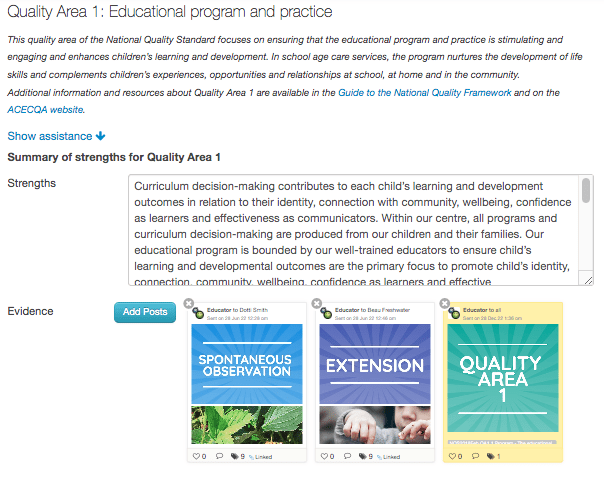
Showcase the amazing everyday things you do! Sometimes it helps to look at your service with fresh eyes. What are your strengths & exceeding themes?
We are almost certain your Kinderloop is already brimming with evidence, perfect for your QIP! Here are some key areas to look at:
Posts
Posts provide valuable insight into your service, they portray the voices of children, staff, families and community members, through photos, videos, documents and writing all of which can be added straight into your QIP as evidence.
Family feedback (blue) posts – Blue posts are wonderful for showing family engagement, especially if educators are commenting back on the posts.
Educator (pink) posts – These posts can often show how your team communicate with one another, discussions with your coordinator, reflections or perhaps ideas you like to share.
Shared (white) posts – These posts can show a multitude of ways you interact with children in your service, from the relationships you have built to documenting their learning & development.
Private (yellow) posts – These posts are often not shared with families, they can show critical reflections, maintenance issues, private observations, photos of interesting set-ups and more.
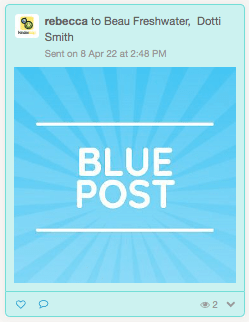
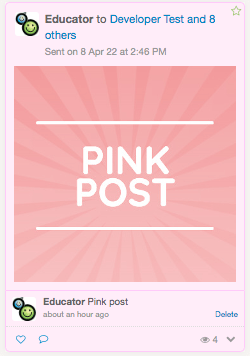
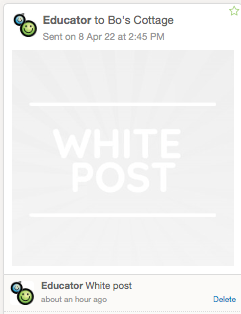
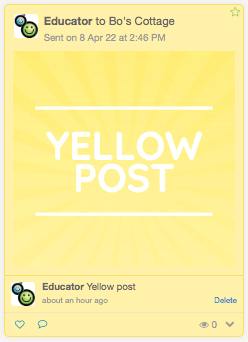
Planning area
‘Calendar’ view – Add planning posts, and linked posts or perhaps discuss how you store special dates or events in your calendar on Kinderloop.
‘Custom’ view – Depending on how you use your Kinderloop, this may be the area you critically reflect or document your curriculum. You can discuss how you plan for the learning & development of children within your service.
‘Ideas’ view – These handy walls are absolutely amazing to create walls of information! Perhaps you have some grand plans or you have created some exciting setups and you want them all in one place. You may also like to create a wall for things like minutes from staff meetings or photos of maintenance issues.
‘Community’ view – Sharing ideas and discussions on a community wall, can show how your service is part of the wider community. We have many services that share information and ideas with one another using the community walls area
Daily Activity Area
Talk about your daily activity area and how you use it to communicate with families whilst documenting & recording the needs of children within your service.
You may use checklists in this area to regularly document health and safety checks or perhaps you utilise the menu area to record and share what your menu is for the week. All of these are stored securely to access at the touch of a button if ever you need a historic view of them.
Surveys
Surveys are a brilliant tool for adding multiple perspectives from your stakeholders. Tag your surveys with the NQS outcomes or QIP tag to add directly to your QIP. You may use surveys to gather information about your service, visits to your local community (excursions), find out more about your families or maybe you use them to regularly check in with staff to see how to better support them.
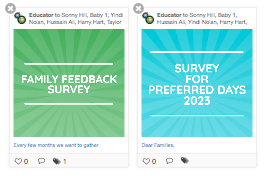
Documents
You can store many types of documents within your Kinderloop. In your QIP you can discuss the documents you share and regularly update such as policies and procedures

Staff & child profiles
The staff bibliographies and qualification area provide a way for family members to know a little more about you. The same goes for families when they utilise the family input area in their child’s profile.

Medication & accident/incident reports
Administering medication and detailing incidents of children in a childcare setting is a task that requires meticulous record-keeping. Kinderloop’s medication feature can support your service to maintain ongoing compliance with regulations 86, 87 & 92 of the National Law and National Regulations by ensuring the information you require is documented, share with parents and stored securely. Did you know that Kinderloop securely stores your records in line with National Regulations even if you are no longer with us.
Learning Tags
Yes we know, we keep going on about learning tags… but they are a surefire way to gather evidence. Make sure your staff are confident using learning tags on posts. It is vital all staff feel empowered to add to the QIP and at the very foundation of empowerment is understanding. Do your staff understand the NQS outcomes? Once an educator understands the outcomes, learning tags are one of the quickest ways to add evidence to your QIP without it feeling like ‘extra work to do’
Find out more information about the NQS & how to write your QIP here!
Happy Kinderlooping!
Follow along on our social pages to ensure you don’t miss out on all of the Kinderloop tips & hints, and learn about our new features!
Facebook
Instagram
Image by wayhomestudio on Freepik
Image by rawpixel.com on Freepik
Image by benzoix on Freepik

